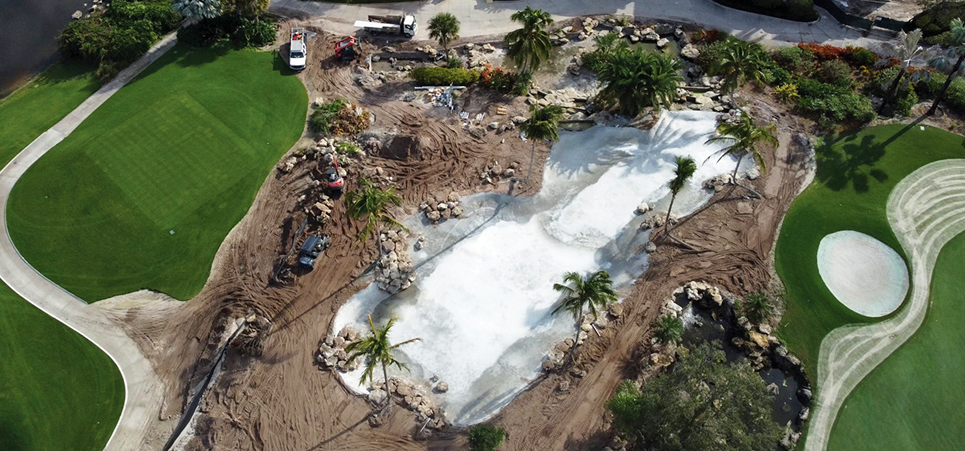
As we all know, water features can take on many shapes and sizes. Because of this, the designs and level of filtration for natural water features can vary from feature to feature. Too often, any issues surrounding how a feature is initially designed and built won’t be understood fully until after the feature is completed and has had time to mature and age. This is especially the case with large-scale water features, or lined bodies of water with some type of waterfall or fountain feature for people to interact with and enjoy. Case in point: one of our recent projects in South Florida.
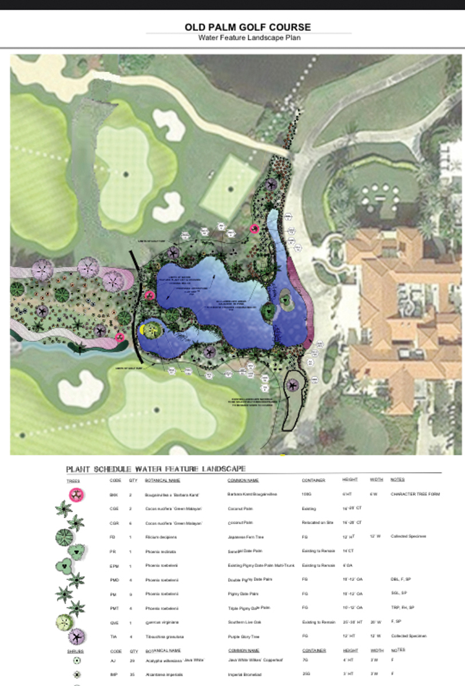
We were approached to consult on an existing waterfall feature at a high-end country club in Palm Beach Gardens, Florida. For 15 years, the main focal-point water feature, which is adjacent to the award-winning golf course and just outside the dining area, had been part of an open system of water features whose main source was the property’s system of lined retention lakes.
Over the course of 15 years, the golf course’s lakes had matured and aged, rendering the water problematic as a source for water features. The lake water was full of abundant solids, and when the water was aerated by the waterfalls, it created a moist-like odor. This odor, of course, was not well received by club members trying to enjoy lunch or dinner on the outside patio.
During our initial meetings with the golf course designers and management, it became clear that even though they understood they could address the lakes and slowly minimize the effects of time, they wanted a more immediate and drastic change to correct what they felt was poor design planning. Since the golf course and clubhouse were about to undergo a major renovation, it was time to address these issues once and for all.Hitting the Course
In order to correct the issues at hand and answer the club members’ call to have clean water, we decided to convert the existing open-system feature into a closed system with filtration and a completely different aesthetic. We couldn’t start from scratch, as we only had four months to plan, demolish and rebuild the feature ahead of the grand reopening of the golf course.
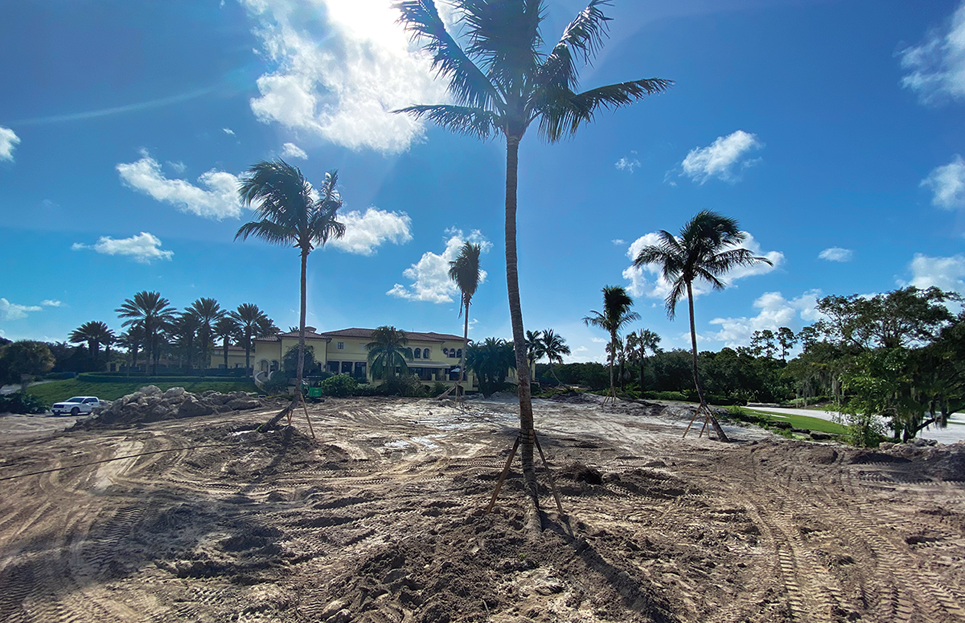
The feature consisted of many small falls that cascaded down to multiple waterfalls and creeks that traversed multiple holes of play on the golf course (primarily holes No. 9 and 18) and ended at the main clubhouse. Because of our inability to control the streams that were part of the golf course fairways and all the nearby irrigation runoffs, mowing, fertilizers and the occasional golfer, we decided to keep the original open-system design and simply renovate and reroute the creek system.
The lake water was full of abundant solids, and when the water was aerated by the waterfalls, it created a moist-like odor. This odor, of course, was not well received by club members trying to enjoy lunch or dinner on the outside patio.
Excavation of the new creek began in July 2021 and needed to be completed by the end of August for the golf turf to have enough time to be installed and grow for the first round to be played in November. So that we didn’t disturb or induce major time-consuming changes to the lake liners with an already tight construction schedule, we tied back into part of the old creek at the water’s edge.
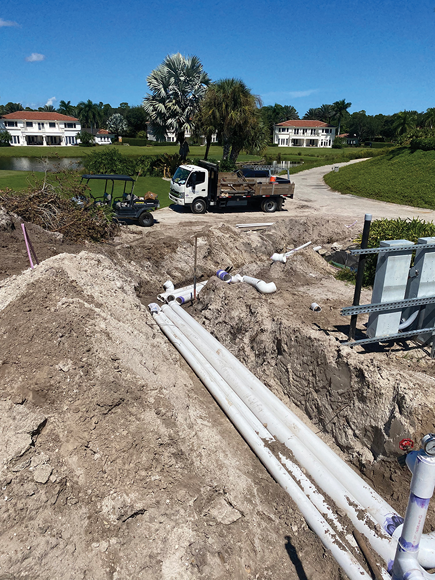
The creek was constructed of 40-mil RPE liner with 12-oz geotextile fabric under and inside the liner. The new liner was structurally attached to the old creek structure with stainless-steel fasteners applied to a batten strip and lap sealant. This was done in a location where the new stream liner could overlap the old stream concrete with enough uphill grade so that water could not flow backwards. We then used 4 inches of shotcrete to cover the liner, protect it from any unintentional damages and create a seamless connection to the existing creek components. Florida caprock limestone boulders were strategically placed to create water movement and add access points to the opposing side of the creek (just in case a golfer was having a rough day on the course and needed to retrieve a ball from a duff or a flub).
Since the creek portion was now an independent feature, we installed a new feature pump to recirculate water from the lake intake up to a waterfall adjacent to the putting green on the ninth hole. For this, we used a 15-Horsepower pump with a variable-speed drive to allow us to control and fine tune the waterfalls to achieve the maximum effect.
Upper Pond Construction
While the creek work was being performed, a separate crew was busy demolishing part of the waterfalls that connected the main waterfall to the creeks, as well as a large portion of the original main waterfall.
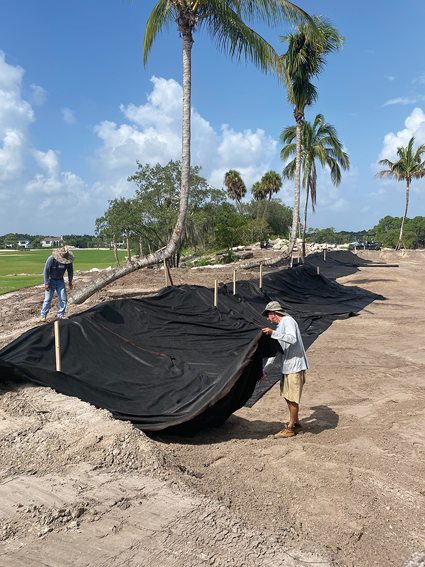
In the design phase of the new water feature, the club had requested that a large upper pond be incorporated into the design as a way to aesthetically make the feature tie into the other falls and creeks on the property, which all have connections to large bodies of water.
Since the new feature would not connect to any existing lakes, a large upper pond was created to provide the same feel. A portion of the original waterfalls was left in place, and the new upper pond would be tied into it, with the remaining waterfall features incorporated into the new closed-system design.
This new upper basin feature is 170 feet long by 90 feet wide with multiple rock outcroppings and lush landscaping. Once again, a 40-mil RPE liner was used with 12-oz geotextile fabric installed both under and inside the liner. To achieve a structural connection from the upper pond to the waterfalls, the pond was connected using the same overlap technique and batten-strip attachment that was used in the creek work. Two spillways were cut into the remaining waterfall courses to create a seamless and natural look between the new upper pond and the remaining waterfall features.
>> Related Content | Alexandro Castro‘s What’s on Your Pond Maintenance Truck
Sticking to Our Gun(ite)s
After the liner construction on the upper basin, we then used rebar and wire mesh to create a structural skeleton inside the pond liner. We shot 186 yards of gunite to create the structural shell. We often use this concrete-over-liner technique in commercial settings. This is our preferred method over a liner-and-rock-only feature in large-scale projects, especially when the design calls for no aquatic life. This method is also a good choice for preventing any unforeseen damages to the liner, especially where large boulders are used and a more natural shape is required.
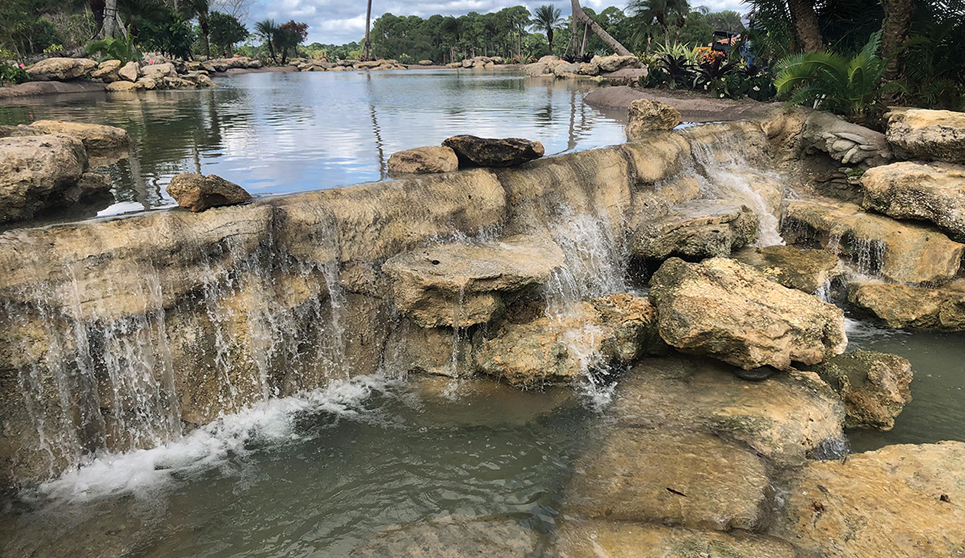
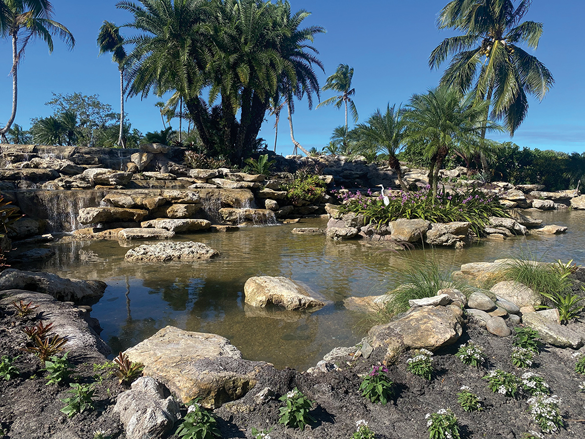
With the original feature inadequately filtered, a large emphasis was put on the filtration design and components. Keep in mind, this feature does not have any aquatic life, therefore enabling consistent treatments to achieve the primary objective — clear water.
Water movement for the feature includes a pair of 10-Horsepower feature pumps with variable-speed drives that produce the desired 480 gallon-per-minute flow rate over the waterfalls. The filtration is achieved by a 5-Horsepower pump, also with a variable-speed drive that allows for dialing in the feature turnover as well as maximizing electrical usage.
All pumps pull water from the lower basin through individual suction grids. The filtration pump has multiple skimmer suctions in addition to its suction grid. The filtration pump then feeds two Koi Smart Bio Gen coarse media filters.
Because this feature requires a consistent dosage of treatments, a treatment feeder was installed, providing crystal-clear water and ease of maintenance, especially during our rainy Florida summers when treatments are often adversely affected by weather.
It’s Tee Time!
As many club members were away during construction, there was lots of excitement and buzz during the last few weeks of this project. Many members could not believe the transformation that had occurred in such a short time. In fact, some could not believe that some of the features were a part of the original water feature! Seeing the smiles on people’s faces when they saw the transformation for the first time was truly rewarding — not to mention the news from the club of increased use of the dining patio!We completed the renovation in November 2021, just as planned and in time for the Thanksgiving holiday and the first round of golf. Large projects and short timelines are not without their struggles, especially at an active job site like this golf-course renovation. Many different teams performed many different tasks on this project to achieve one end goal: a crystal-clear, tranquil water feature for all to enjoy!


